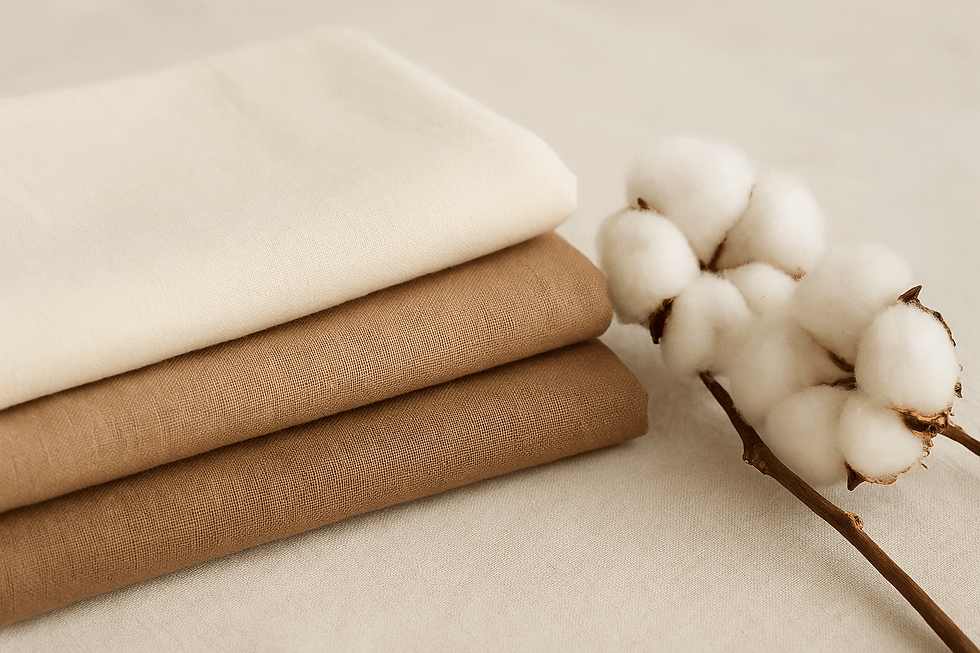Natural Fibers Fabrics Uncovered: Linen
- Team SC
- Sep 22
- 2 min read
Updated: Oct 3

At Source Creative, we believe that understanding the natural characteristics of fabrics is just as important as designing with them. This is why we’re starting a new series for designers, creative heads, and sustainable fashion enthusiasts — exploring the unique quirks of natural fibers and how to make the most of them.
In this first edition, we focus on linen, one of the oldest and most beloved fibers in fashion.
Why We Love Linen
Linen is a textile with personality. It’s breathable, durable, and sustainable, making it perfect for capsule collections, summer wear, and artisanal pieces. But like all natural fibers, it comes with quirks that designers should embrace rather than see as flaws.
1. Wrinkles
Linen naturally wrinkles — a hallmark of its relaxed, effortless elegance. These wrinkles are not a flaw; they give each garment a lived-in charm.
2. Slubs
You may notice thicker knots along the yarn. These are called slubs and add artisanal texture and visual interest to your fabric. Every piece tells a story.
3. Color Variation
Handwoven or hand-dyed linen can have subtle shifts in shade. This unique color variation makes every garment one-of-a-kind, perfect for brands valuing individuality and craftsmanship.
4. Coarseness & Itchiness
At first touch, linen may feel crisp, coarse, or slightly itchy. This is due to the structure of flax fibers and some shorter fiber ends remaining in the yarn. The good news? Linen softens naturally with washing, steaming, and regular wear, creating a luxurious hand over time.
5. Durability & Breathability
Linen fibers are naturally strong, moisture-wicking, and breathable. Garments made from linen are built to last and feel comfortable even in warmer climates.
Care Tips for Linen
Proper care ensures your linen garments look and feel their best while lasting longer:
Washing: Hand wash or machine wash on a gentle cycle with cold water. Avoid bleach.
Drying: Air-dry flat or hang; avoid prolonged sun exposure to prevent fading.
Ironing: Steam iron while the fabric is damp for a crisp finish. Wrinkles are natural and part of its charm.
Storage: Fold or roll to prevent deep creases. Avoid overcrowding in closets.
Softening: Repeated washing, gentle steaming, or blending with cotton will soften the fabric over time.
Designer Tips for Working with Linen
Pre-wash or soak fabrics before cutting to reduce shrinkage.
Embrace wrinkles, slubs, and color variations — they add authenticity and story.
Blend with cotton for a softer feel if needed, while keeping the natural texture intact.
At Source Creative, we source handwoven and artisanal linens that celebrate these natural traits. By understanding and embracing linen’s characteristics, designers can create timeless, sustainable, and story-rich capsule collections.
🌱 Join the Conversation: How do you handle linen’s quirks in your designs? Share your tips and experiences in the comments below!
Next in the Series: Stay tuned for Cotton, Hemp, Silk, and Wool editions, where we’ll explore their unique textures, quirks, and best practices for sustainable fashion design.



Comments